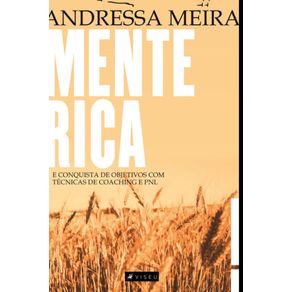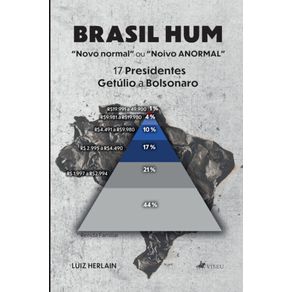| Selo | Information Age Publishing |
|---|---|
| Edição | 0 |
| Idioma | Inglês |
| Autores | Chris Peers |
| Acabamento | Capa Dura |
| Quantidade de Páginas | 146 |
| Origem | Literatura Estrangeira |
 Voto a voto: os cinco principais motivos que levaram Bolsonaro a perder (por pouco) a reeleição
Voto a voto: os cinco principais motivos que levaram Bolsonaro a perder (por pouco) a reeleição
Telha
R$ 65,00 à vista Utopia, resistência, perda do centro: a literatura Brasileira de 1960 a 1990
Utopia, resistência, perda do centro: a literatura Brasileira de 1960 a 1990
ediPUCRS
R$ 80,00 à vista Pão e circo: Uma epopeia brasileira
Pão e circo: Uma epopeia brasileira
Editora Viseu
R$ 133,84 ou até 2x sem juros Textos para pensar: Reflexões de um professor que recusa a omissão
Textos para pensar: Reflexões de um professor que recusa a omissão
Editora Viseu
R$ 138,50 ou até 2x sem juros A luta pela anistia na Bahia
A luta pela anistia na Bahia
Editora Viseu
R$ 80,90 à vista Escola de gênios: O que os grandes gênios poderão e farão por você
Escola de gênios: O que os grandes gênios poderão e farão por você
Editora Viseu
R$ 73,90 à vista Egito: Tradição e arte
Egito: Tradição e arte
Editora Viseu
R$ 57,90 à vista Mente rica e conquista de objetivos com técnicas de coaching e PNL
Mente rica e conquista de objetivos com técnicas de coaching e PNL
Editora Viseu
R$ 27,90 à vista Federalismo, políticas públicas e reforma do Estado
Federalismo, políticas públicas e reforma do Estado
Editora Viseu
R$ 70,59 à vista Bolsonaro Presidente
Bolsonaro Presidente
Editora Viseu
R$ 49,90 à vista Limites quantitativos de uniões familiares para fins previdenciários
Limites quantitativos de uniões familiares para fins previdenciários
Editora Viseu
R$ 73,90 à vista Paixão, desejo, ciúme
Paixão, desejo, ciúme
Editora Viseu
R$ 47,90 à vista O impacto dos influenciadores digitais nas eleições de 2018: Quem são, de onde vêm e o que querem
O impacto dos influenciadores digitais nas eleições de 2018: Quem são, de onde vêm e o que querem
Editora Viseu
R$ 30,90 à vista A nova era apocalíptica menino veste azul e menina veste rosa
A nova era apocalíptica menino veste azul e menina veste rosa
Editora Viseu
R$ 77,98 à vista Libertarianismo; O que não ensinam nas Escolas & Faculdades
Libertarianismo; O que não ensinam nas Escolas & Faculdades
Editora Viseu
R$ 57,19 à vista Sitiado em Lagos
Sitiado em Lagos
Perspectiva
R$ 49,90 à vista Pão e circo: Uma epopeia brasileira
Pão e circo: Uma epopeia brasileira
Editora Viseu
R$ 133,84 ou até 2x sem juros Egito: Tradição e arte
Egito: Tradição e arte
Editora Viseu
R$ 57,90 à vista Mente rica e conquista de objetivos com técnicas de coaching e PNL
Mente rica e conquista de objetivos com técnicas de coaching e PNL
Editora Viseu
R$ 27,90 à vista Quero ser presidente do Brasil
Quero ser presidente do Brasil
Editora Viseu
R$ 59,96 à vista Brasil, um transatlântico à deriva?
Brasil, um transatlântico à deriva?
Editora Viseu
R$ 47,90 à vista Serviço social para corajosos
Serviço social para corajosos
Editora Viseu
R$ 51,90 à vista Cordeiros em pele de lobo; Um ensaio sobre inteligência estratégica
Cordeiros em pele de lobo; Um ensaio sobre inteligência estratégica
Editora Viseu
R$ 90,90 à vista No limite da linha: Seres limitados em um mundo sem limites
No limite da linha: Seres limitados em um mundo sem limites
Editora Viseu
R$ 50,90 à vista Brasil Hum: Novo normal ou Noivo anormal (17 Presidentes - Getúlio a Bolsonaro)
Brasil Hum: Novo normal ou Noivo anormal (17 Presidentes - Getúlio a Bolsonaro)
Editora Viseu
R$ 37,90 à vista Paixão, desejo, ciúme
Paixão, desejo, ciúme
Editora Viseu
R$ 47,90 à vista Leituras em Kant: O Ensino Religioso / Os Juízos Teleológicos / A Folha de Figueira
Leituras em Kant: O Ensino Religioso / Os Juízos Teleológicos / A Folha de Figueira
Editora Viseu
R$ 40,90 à vista A nova era apocalíptica menino veste azul e menina veste rosa
A nova era apocalíptica menino veste azul e menina veste rosa
Editora Viseu
R$ 77,98 à vista Conectando-se com Deus
Conectando-se com Deus
Editora Viseu
R$ 59,96 à vista La Biblia en Campo Minado
La Biblia en Campo Minado
Editora Viseu
R$ 122,79 ou até 2x sem juros Voto a voto: os cinco principais motivos que levaram Bolsonaro a perder (por pouco) a reeleição
Voto a voto: os cinco principais motivos que levaram Bolsonaro a perder (por pouco) a reeleição
Telha
R$ 65,00 à vista O Rio tem jeito
O Rio tem jeito
Livros Ilimitados
R$ 69,90 à vista Utopia, resistência, perda do centro: a literatura Brasileira de 1960 a 1990
Utopia, resistência, perda do centro: a literatura Brasileira de 1960 a 1990
ediPUCRS
R$ 80,00 à vista Pão e circo: Uma epopeia brasileira
Pão e circo: Uma epopeia brasileira
Editora Viseu
R$ 133,84 ou até 2x sem juros Textos para pensar: Reflexões de um professor que recusa a omissão
Textos para pensar: Reflexões de um professor que recusa a omissão
Editora Viseu
R$ 138,50 ou até 2x sem juros Política do ódio no Brasil
Política do ódio no Brasil
Editora Viseu
R$ 73,90 à vista Escola de gênios: O que os grandes gênios poderão e farão por você
Escola de gênios: O que os grandes gênios poderão e farão por você
Editora Viseu
R$ 73,90 à vista Filosofia, Literatura e Linguística
Filosofia, Literatura e Linguística
Editora Viseu
R$ 68,90 à vista Egito: Tradição e arte
Egito: Tradição e arte
Editora Viseu
R$ 57,90 à vista Os impactos psíquicos da função policial militar
Os impactos psíquicos da função policial militar
Editora Viseu
R$ 47,90 à vista Ensaio sobre The Dark Side of the Moon e a Filosofia
Ensaio sobre The Dark Side of the Moon e a Filosofia
Editora Viseu
R$ 70,13 à vista Brasil Hum: Novo normal ou Noivo anormal (17 Presidentes - Getúlio a Bolsonaro)
Brasil Hum: Novo normal ou Noivo anormal (17 Presidentes - Getúlio a Bolsonaro)
Editora Viseu
R$ 37,90 à vista O impacto dos influenciadores digitais nas eleições de 2018: Quem são, de onde vêm e o que querem
O impacto dos influenciadores digitais nas eleições de 2018: Quem são, de onde vêm e o que querem
Editora Viseu
R$ 30,90 à vista A nova era apocalíptica menino veste azul e menina veste rosa
A nova era apocalíptica menino veste azul e menina veste rosa
Editora Viseu
R$ 77,98 à vista Libertarianismo; O que não ensinam nas Escolas & Faculdades
Libertarianismo; O que não ensinam nas Escolas & Faculdades
Editora Viseu
R$ 57,19 à vista